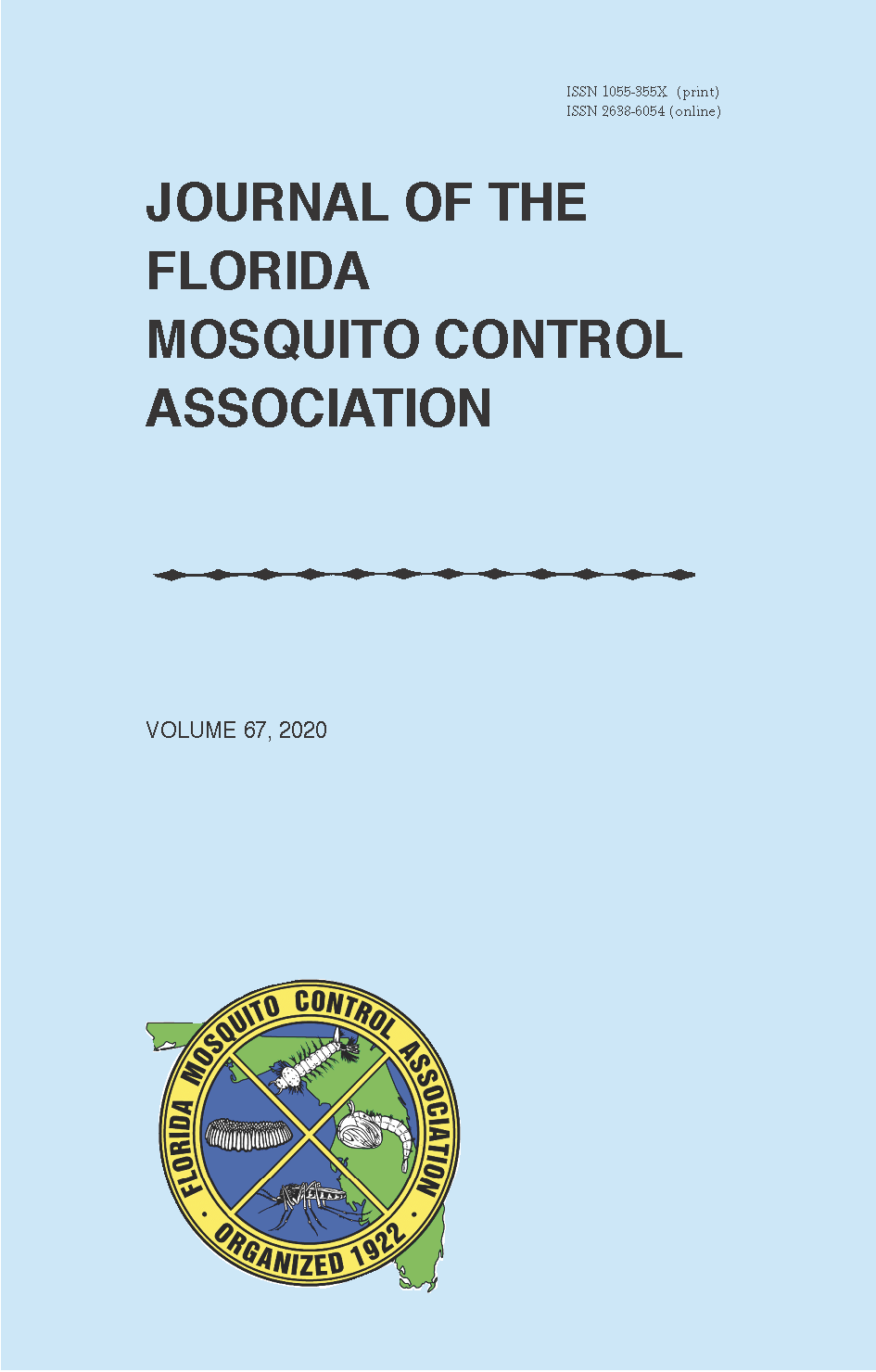EFFECT OF THE COMBINED NOZZLE ORIENTATION AND TRUCK SPEED ON EFFICACY OF ULTRA-LOW-VOLUME SPRAY AGAINST CAGED AEDES ALBOPICTUS IN URBAN GAINESVILLE, FLORIDA
DOI:
https://doi.org/10.32473/jfmca.v67i1.127635Abstract
A field study was conducted to evaluate the combined effect of nozzle orientation and vehicle travel speed on droplet dispersion and mosquito mortality of an adulticide applied from a truck mounted ULV sprayer in the City of Gainesville, Florida. Three multi-block areas with dense, medium, and sparse vegetation were selected for the study. Aqua-Reslin ® was applied in each area in the following treatment combinations: a) horizontal nozzle at 24 km/h travel speed, b) 45° upward orientation (standard) at 16 km/h, and c) 22.5° upward orientation at 24 km/h. Caged, three to five day old Aedes albopictus females were used in all evaluations. Spray deposition was determined at various locations inside each application area using Florida Latham Bonds droplet impingers. There was a significant difference in 24-h mortality among the 3 nozzle angle and speed treatment combinations, but not in the interaction between those combinations and application distance. The 22.5° nozzle combination resulted in the greatest mosquito mortality (88.3%) while the 45° combination resulted in the least mortality (63.1%). A significant difference in 24-h mortality among the 3 vegetation densities and application distances occurred with no significant interaction among these two parameters. The greatest Ae. albopictus mortality was recorded in the sparse (91.4%) and the lowest in the medium vegetation area (72.2%) at the maximum rate of 0.0015 lb./acre. Adulticide deposition was not significantly different among vegetation levels, but was significantly different among the distances and interactions of those parameters.

